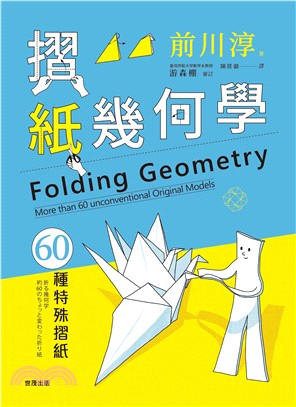Biocatalysis For Pharmaceutical Industry - Discovery, Development And Manufacturing
- ISBN13:9780470823149
- 出版社:John Wiley & Sons Inc
- 作者:Tao
- 裝訂/頁數:精裝/336頁
- 出版日:2009/03/26
商品簡介
Covers a wide range of topics in a systematic manner with an emphasis on industrial applications
Provides a thorough introduction to the latest biocatalysts, modern expression hosts, state-of-the-art directed evolution, high throughput screening, and bioprocess engineering
Addresses frontier subjects such as emerging enzymes, metabolite profiling, combinatorial biosynthesis, metabolic engineering, and autonomous enzymes for the synthesis and development of chiral molecules, drug metabolites, and semi-synthetic medicinal compounds and natural product analogs
Highlights the impact of biocatalysis on green chemistry
Contains numerous graphics to illustrate concepts and techniques
Biocatalysis for the Pharmaceutical Industry is an essential resource for scientists, engineers, and R&D policy makers in the fine chemical, pharmaceutical, and biotech industries. It is also an invaluable tool for academic researchers and advanced students of organic and materials synthesis, chemical biology, and medicinal chemistry.
作者簡介
Prof. Guo-Qiang Lin is a professor at Shanghai Institute of Organic Chemistry, the Chinese Academy of Sciences, China. With over 150 publications, Prof. Lin is well recognized in synthetic organic chemistry and medicinal chemistry. He is associate editors for three journals in the fields and an Executive Board Member for Tetrahedron.
Prof. Andreas Liese is Professor of Technical Biochemistry and Head of Institute of Technical Biocatalysis, Hamburg University of Technology, Germany. Worked in both academia and pharmaceutical industry, Prof. Liese has made significant contributions to industrial biotransformations, enzyme technology and biochemical engineering. He is a member of the editorial board, Journal of Molecular Catalysis B and has published over 50 papers and 2 books.
目次
1 Enzymes and Their Synthetic Applications: An Overview.
1.1 Introduction.
1.2 Enzyme Families.
1.3 Enzyme Discovery and Optimization.
1.4 Enzyme Production.
1.5 Enzymes and Synthetic Applications.
1.5.1 Ketoreductases (EC 1.1.1.2).
1.5.2 Enoate Reductases or Ene Reductases (EC 1.3.1.16).
1.5.3 Oxygenases (EC. xxxx).
1.5.4 Alcohol Oxidases (EC 1.1.3.X).
1.5.5 Peroxidases (EC 1.11.1.X).
1.5.6 Halogenases (EC. xxxx).
1.5.7 Nitrilases (EC 3.5.5.1).
1.5.8 Nitrile Hydratases (EC 4.2.1.84).
1.5.9 Epoxide Hydrolases (EC 3.3.2.X).
1.5.10 !-Transaminases (EC 2.6.1.X).
1.5.11 Hydroxynitrile Lyases (EC 4.1.2.X).
1.5.12 Aldolases (EC. xxxx).
1.5.13 Glycosidases (EC. xxxx).
1.5.14 Glycosyltransferase (EC. xxxx).
1.6 Conclusions.
2 Expression Hosts for Enzyme Discovery and Production.
2.1 Introduction.
2.2 How to Choose an Expression System.
2.3 Prokaryotic Expression Systems.
2.3.1 Posttranslational Modification in Prokaryotes.
2.3.2 Escherichia coli.
2.3.3 Bacilli.
2.3.4 Pseudomonas fluorescens.
2.3.5 Other Prokaryotic Expression Systems.
2.4 Eukaryotic Expression Systems.
2.4.1 Yeasts.
2.4.2 Filamentous Fungi.
2.4.3 Insect/Baculovirus System.
2.4.4 Mammalian Cell Cultures.
2.4.5 Other Expression Systems.
2.5 Cell-Free Expression Systems.
2.6 Conclusions.
3 Directed Enzyme Evolution and High-Throughput Screening.
3.1 Introduction.
3.2 Directed Evolution Library Creation Strategies.
3.2.1 Random and Semi-Rational Mutagenesis.
3.2.2 Gene Shuffling.
3.3 Directed Evolution Library Screening/Selection Methods.
3.3.1 In Vivo Methods: Genetic Complementation.
3.3.2 In Vivo Methods: Chemical Complementation.
3.3.3 In Vivo Methods: Surface Display.
3.3.4 In Vitro Methods: Lysate Assay.
3.3.5 In Vitro Methods: Ribosome Display.
3.3.6 In Vitro Methods: In Vitro Compartmentalization.
3.3.7 Equipment/Automation.
3.4 Selected Industrial Examples.
3.4.1 Activity.
3.4.2 Thermostability.
3.4.3 Substrate Specificity.
3.4.4 Product Specificity.
3.4.5 Enantioselectivity.
3.5 Conclusions and Future Directions.
4 Applications of Reaction Engineering to Industrial Biotransformations.
4.1 Introduction.
4.2 Metabolic Bioconversion.
4.3 Enzymatic Biotransformations.
4.3.1 Cofactor Regeneration.
4.3.2 Racemic Mixtures.
4.3.3 Equilibrium Conversion.
4.3.4 By-Product Formation.
4.3.5 Substrate Inhibition.
4.3.6 Low Solubility.
4.4 Conclusions.
5 Chiral Synthesis of Pharmaceutical Intermediates Using Oxynitrilases.
5.1 Introduction.
5.2 HNL.
5.2.1 The Natural Function and Distribution of HNLs.
5.2.2 Classification of HNLs.
5.2.3 New HNLs and High-Throughput Screening.
5.3. Reaction of HNLs.
5.3.1 Reaction System.
5.3.2 Immobilization of Enzyme.
5.3.3 Continuous Reactors.
5.3.4 Henry Reaction.
5.4 Transformation of Cyanohydrins.
5.4.1 Transformation of Hydroxyl Group.
5.4.2 Transformation of Nitrile Group.
5.4.3 Intramolecular Reaction.
5.5 Summary.
6 Expanding the Scope of Aldolases as Tools for Organic Synthesis.
6.1 Directed Evolution and Rational Mutagenesis.
6.2 Reaction Engineering.
6.3 Broad Substrate Tolerance of Wild-Type Aldolases.
6.4 Conclusions.
7 Synthetic Applications of Ketoreductases and Alcohol Oxidases.
7.1 Ketoreductases.
7.1.1 Wild-Type Whole-Cell Biocatalysts.
7.1.2 Recombinant Whole-Cell Biocatalysts Overexpressing Catalytic Enzymes.
7.1.3 Isolated Enzyme.
7.2 Alcohol Oxidases.
7.2.1 Primary Alcohol Oxidases.
7.2.2 Secondary Alcohol Oxidases.
8 Applications of Nitrile Hydratases and Nitrilases.
8.1 Introduction.
8.2 NHase.
8.2.1 New NHases.
8.2.2 Applications.
8.3 Nitrilase.
8.3.1 New Nitrilases.
8.3.2 Applications.
8.4 Conclusions.
9 Biosynthesis of Drug Metabolites.
9.1 Introduction.
9.2 Metabolite Synthesis Using Mammalian Bioreactors.
9.2.1 Selection of In Vitro Systems.
9.2.2 Reaction Condition Optimization.
9.2.3 Large Scale Incubations.
9.2.4 Examples with Mammalian Bioreactors.
9.2.5 In Vivo Samples.
9.3 Metabolite Synthesis Using Microbial Bioreactors.
9.3.1 Microbial Bioreactors Used in Metabolite Structure Elucidation.
9.3.2 Microbial Bioreactors Used in Synthesis of Key Metabolites.
9.3.3 Strain Selection.
9.3.4 Microbial Glycoside Conjugation.
9.3.5 Large Scale Reactions.
9.3.6 Examples for Metabolite Synthesis with a Microbial Bioreactor.
9.4 Recombinant Enzyme Bioreactors.
9.4.1 Advantages of Using CYP Enzymes for Producing Drug Metabolites.
9.4.2 Human Cytochrome Biocatalysts.
9.4.3 Microbial CYP Enzymes.
9.5 Summary.
10 Application of Whole-Cell Biotransformation in the Pharmaceutical Industry.
10.1 Introduction.
10.1.1 Whole-Cell Biotransformation Processes Used in Commercial Production of Pharmaceuticals.
10.1.2 Application of Whole-Cell Biotransformation Process in the Synthesis of Chiral Pharmaceutical Intermediates.
10.2 Disadvantages of Whole-Cell Process Compared with the Isolated Enzyme Process.
10.2.1 Substrate Availability and Recovery of Products in Low Concentrations.
10.2.2 Undesirable Side Reactions.
10.2.3 Toxicity of Substrate and Product.
10.3 Advantages of Whole-Cell Process Compared with the Isolated Enzyme Process.
10.3.1 More Stable Sources than Isolated Enzymes.
10.3.2 Regeneration of Cofactors and Multi-Enzymes Reactions.
10.3.3 Diversity and Availability.
10.3.4 Reactions with Non-Commercially Available Isolated Enzymes for Preparative Scale Synthesis.
10.3.5 Cost Effectiveness and Ease of Operation.
10.4 Approaches to Address the Disadvantages of Whole-Cell Biotransformation.
10.4.1 Control of Substrate and Product Concentration by Absorbing Resins.
10.4.2 Immobilized-Cell Technology.
10.4.3 Aqueous–Organic Two-Phase System.
10.4.4 Genetic Engineering Approaches.
10.5 Conclusions.
11 Combinatorial Biosynthesis of Pharmaceutical Natural Products.
11.1 Introduction.
11.2 Combinatorial Biosynthesis: The Natural Way for Structural Diversity.
11.3 Examples of Combinatorial Biosynthesis of Pharmaceutical Natural Products.
11.3.1 Erythromycin (Polyketide Biosynthesis).
11.3.2 Daptomycin (Nonribosomal Peptide Biosynthesis).
11.3.3 Patellamide (Ribosomal Peptide Biosynthesis).
11.4 Summary and Perspectives.
12 Metabolic Engineering for the Development and Manufacturing of Pharmaceuticals.
12.1 Introduction.
12.2 Metabolic Engineering Tools.
12.2.1 Tools for the Cellular Metabolic Network Analysis.
12.2.2 Tools for Rational Genetic Modification.
12.3 Metabolic Engineering for the Development and Production of Polyketide Pharmaceuticals.
12.3.1 Biosynthesis of Polyketides.
12.3.2 Metabolic Engineering for Improved Erythromycin Production.
12.3.3 Metabolic Engineering for Overproduction of 6dEB in Heterologous Hosts.
12.3.4 Metabolic Engineering of Other Polyketides.
12.3.5 Development of Novel Polyketides for Drug Discovery.
12.4 Metabolic Engineering for the Production of -Lactam.
12.5 Metabolic Engineering for Isoprenoid Production.
12.5.1 Biosynthesis Pathway of Isoprenoids.
12.5.2 Metabolic Engineering for Enhancing Precursor Supply for Isoprenoid Production.
12.5.3 Metabolic Engineering for Artemisinine Development and Production.
12.5.4 Metabolic Engineering for Carotenoid Production.
12.5.5 Metabolic Engineering for Taxol Development and Production.
12.6 Conclusions.
13 Multimodular Synthases and Supporting Enzymes for Chemical Production.
13.1 Introduction.
13.2 Background.
13.2.1 Multimodular Synthase Architecture.
13.2.2 Natural Product Biosynthetic Cycle.
13.3 Metabolic Engineering of Megasynthases.
13.3.1 Daptomycin: Metabolic Engineering by Domain Swap.
13.3.2 Avermectin: Metabolic Engineering by Directed Fermentation.
13.4 Excised Domains for Chemical Transformations.
13.4.1 Function of Individual Domains, Domain Autonomy.
13.4.2 Cyclization.
13.4.3 Halogenation.
13.4.4 Heterocyclization/Aromatization.
13.4.5 Methylation.
13.4.6 Oxygenation.
13.4.7 Glycosylation.
13.5 Conclusions.
14 Green Chemistry with Biocatalysis for Production of Pharmaceuticals.
14.1 Introduction.
14.2 Enzymatic Resolutions: Higher Yields, Less Waste.
14.3 Bioreductions: Greener Ligands, Renewable Hydride Donors, No Metals.
14.3.1 Enzymatic Oxidations: Clean, Highly Selective and Catalytic.
14.4 CC Bond Formations: Atom Efficiency at Its Best.
14.5 Summary and Outlook.
Index.
主題書展
更多主題書展
更多書展本週66折
您曾經瀏覽過的商品
購物須知
外文書商品之書封,為出版社提供之樣本。實際出貨商品,以出版社所提供之現有版本為主。部份書籍,因出版社供應狀況特殊,匯率將依實際狀況做調整。
無庫存之商品,在您完成訂單程序之後,將以空運的方式為你下單調貨。為了縮短等待的時間,建議您將外文書與其他商品分開下單,以獲得最快的取貨速度,平均調貨時間為1~2個月。
為了保護您的權益,「三民網路書店」提供會員七日商品鑑賞期(收到商品為起始日)。
若要辦理退貨,請在商品鑑賞期內寄回,且商品必須是全新狀態與完整包裝(商品、附件、發票、隨貨贈品等)否則恕不接受退貨。
























